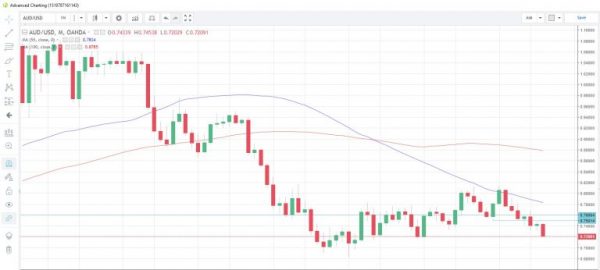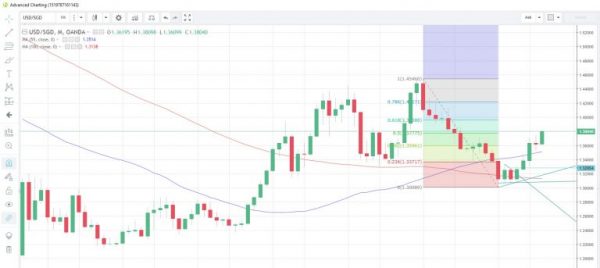AUD/USD hits lowest in 19-months
Further signs that China’s economy may be slowing helped push the Australian dollar to its lowest level since January 2017, though the fall was cushioned somewhat by a slight pop in iron ore prices on China’s Dalian exchange. The Aussie is trading about 7.5% lower versus the US dollar since the beginning of the year. Fixed asset investment rose 5.5% y/y from January to July in China, less than the 6.0% forecast and the smallest increase since data began in early 2008.
Elsewhere, USD/TRY consolidated yesterday’s 10.1% drop with a mild rebound to 6.4793. USD/MXN likewise rose 0.44% while USD/SGD, a good barometer of the dollar’s direction, rose 0.13% to 1.3800, its highest level in just over a year.
Australia wages growth hits forecast
Wages growth in Australia remains slow, with the county’s wage price index rising 0.6% q/q in Q2, a slight pickup from the 0.5% rate in Q1 though has consistently held in the 0.4% to 0.6% range for the past four years. Slow wages growth (combined with high household debt) has been cited by the RBA as a reason for keeping interest rates at record lows. Consumer confidence, as measured by the Westpac index was down 2.3% in August after registering and improvement of 3.9% the previous month.
UK inflation data scheduled
The rest of today’s calendar comprises China’s foreign direct investment totals from January to July followed by more data from the UK. This time we have both producer and consumer prices and DCLG’s reading of house prices in July. The Bank of England cited taming consistently high inflation as one of the reasons for hiking rates earlier this month and should we get a higher-than-estimated number, talk will increase about the timing of the next hike.
The US session features US retail sales, the industrial production/capacity utilization combo and business inventories. Closing the session we see net inflows/outflows of financial resources in the US with the monthly TIC flows data.















